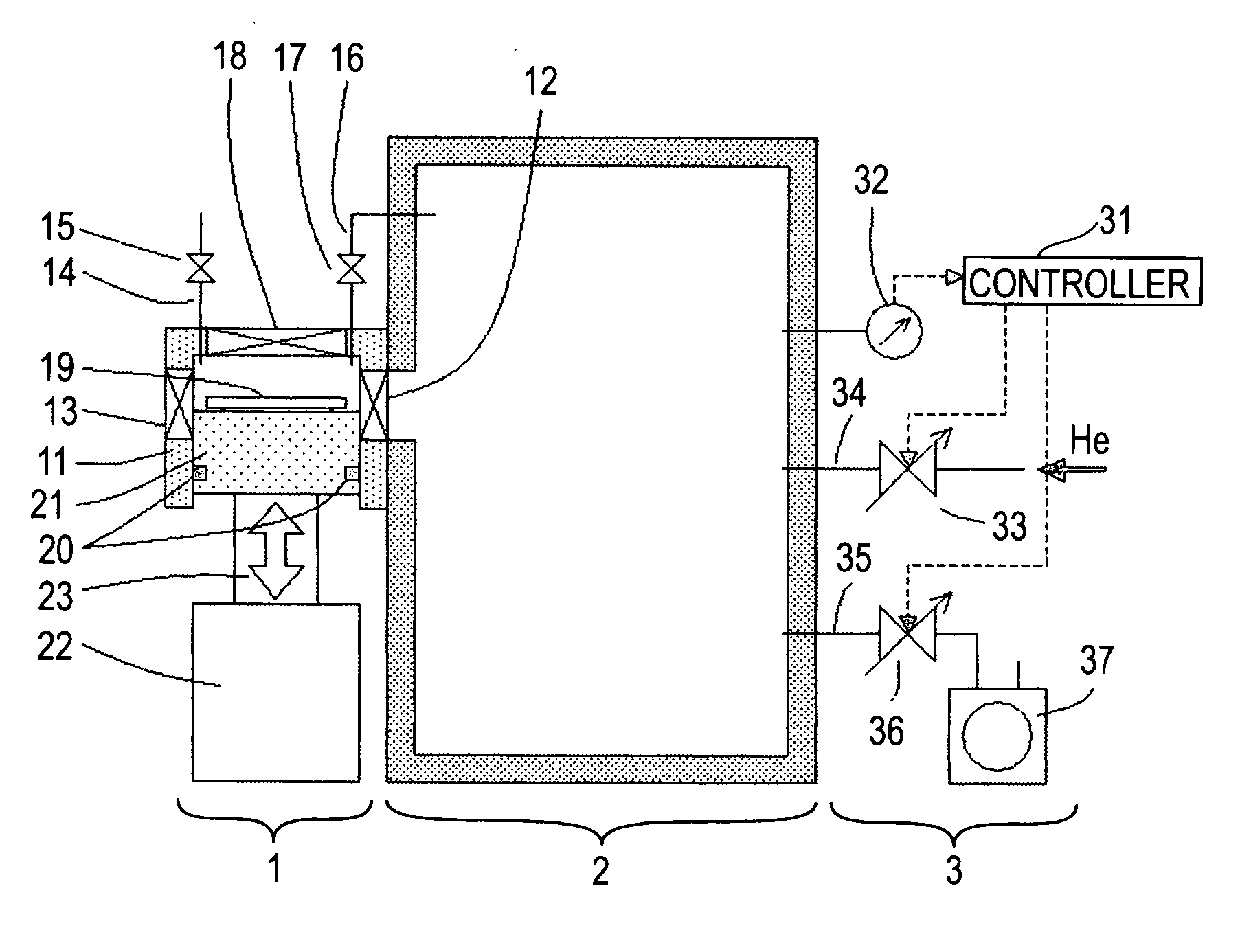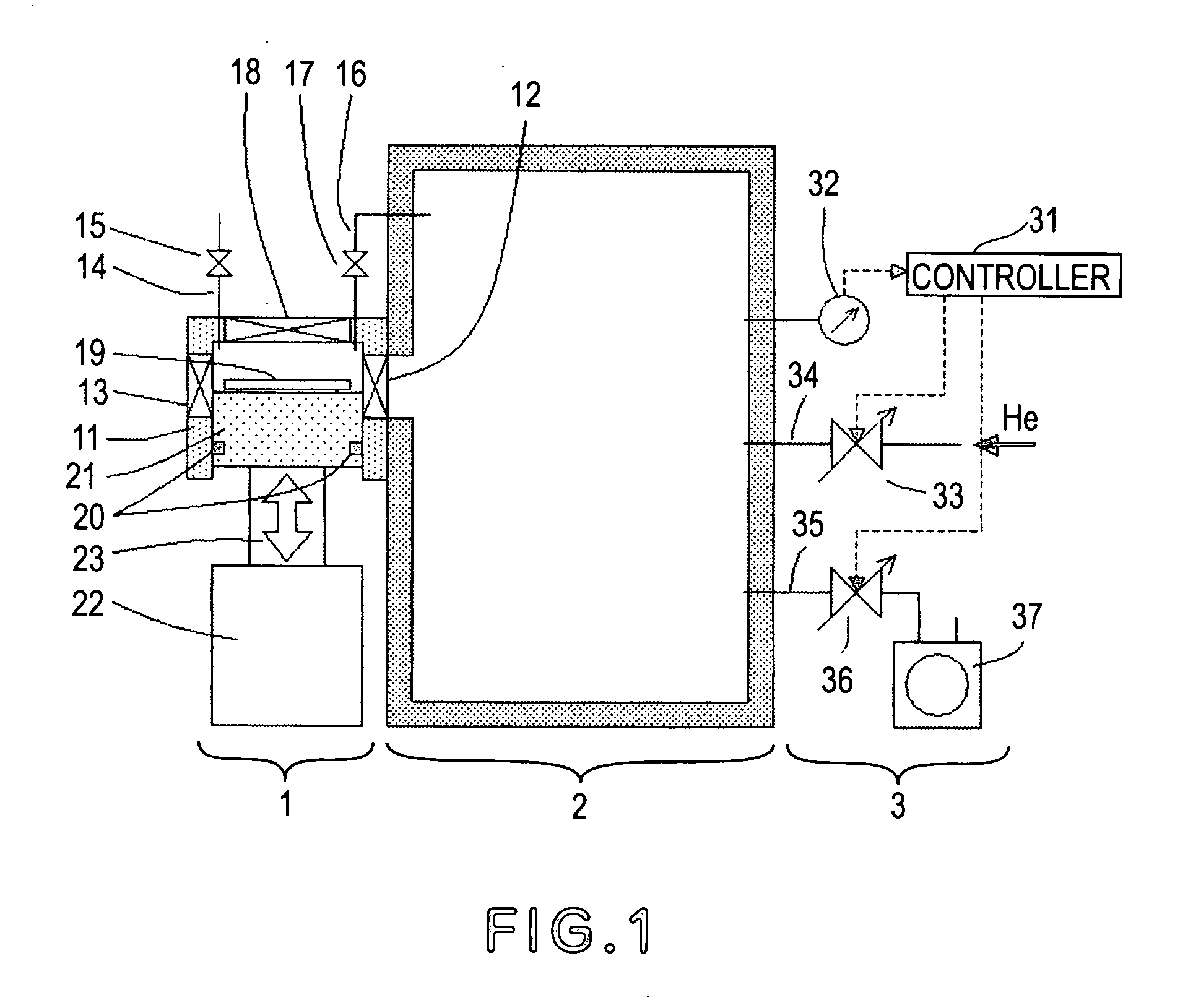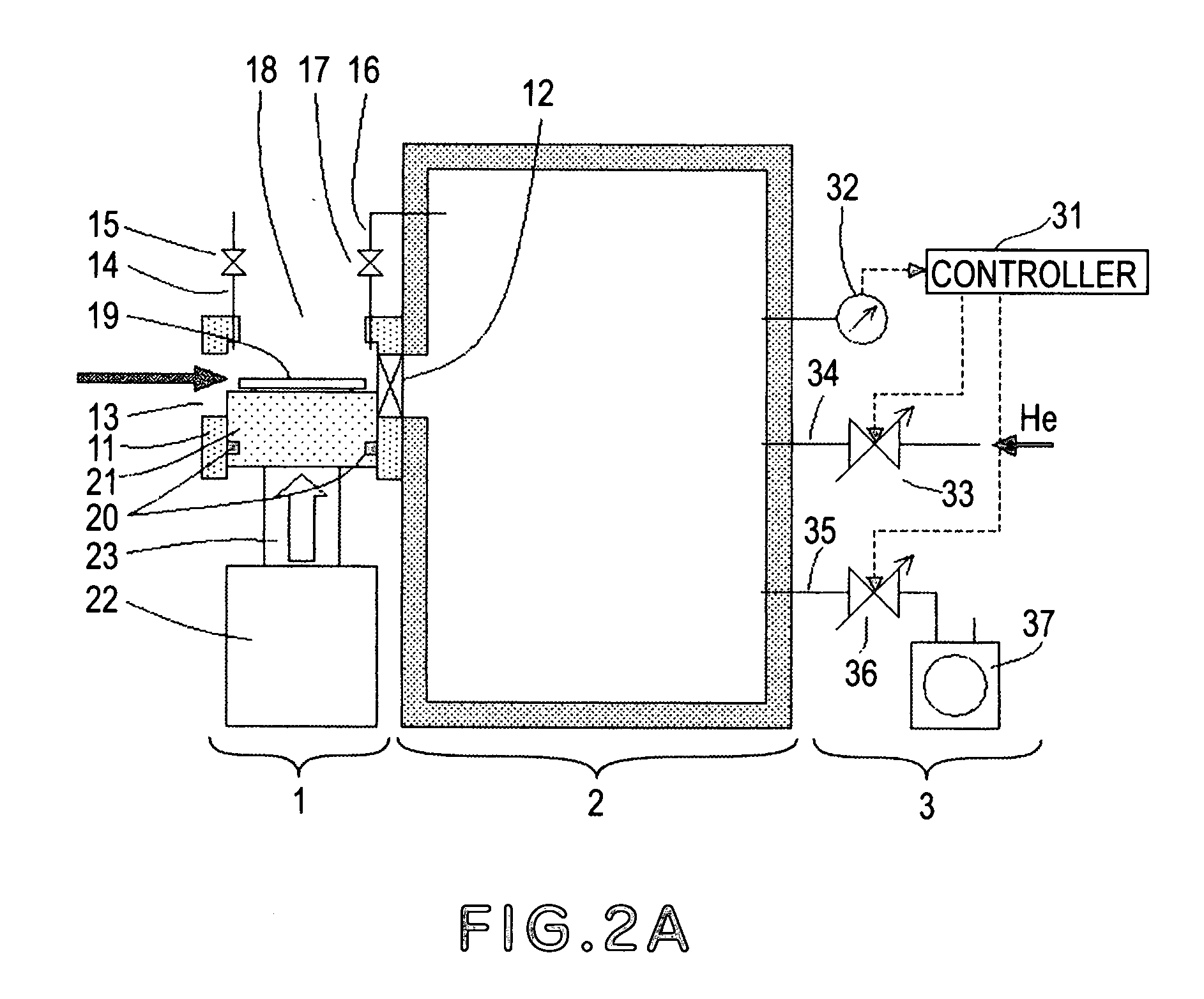Load-lock technique
a technology of loading and releasing, applied in the field of loading locks, can solve the problems of reducing the time required for the process itself, affecting the production yield, and affecting the quality of the product, so as to reduce or suppress the contamination or temperature drop
- Summary
- Abstract
- Description
- Claims
- Application Information
AI Technical Summary
Benefits of technology
Problems solved by technology
Method used
Image
Examples
embodiment 1
[0051]FIG. 1 illustrates a load-lock system according to a first embodiment of the present invention. In this embodiment, the invention is applied to an X-ray exposure apparatus in which the exposure process is carried out in a particular ambience such as reduced pressure He ambience, for example. Denoted at 1 is a load-lock system of the present invention. The load-lock system 1 is provided to load a substrate 19 into a main chamber 2 from the atmosphere and also to unload the substrate 19, after an exposure process is carried out thereto inside the main chamber 2, outwardly (to the atmosphere), without breaking a particular ambience of the main chamber 2 such as reduced pressure He ambience, for example. Denoted at 2 is the main chamber in which a process (e.g., exposure process in this embodiment) is to be carried out to the substrate 19 in a particular ambience. Inside the main chamber 2, there are components for carrying out an exposure process to the substrate 19, such as a co...
embodiment 2
[0077]FIG. 4 illustrates a load-lock system according to a second embodiment of the present invention. In this embodiment, the invention is applied to an EUV exposure apparatus in which the exposure process is carried out in a vacuum ambience. In this embodiment, components having corresponding functions as of those of the first embodiment are denoted by like numerals, and detailed description for them will be omitted.
[0078] Denoted at 1 is a load-lock system of the present invention. The load-lock system 1 is provided to load a substrate 19 into a main chamber 2 from the atmosphere and also to unload the substrate, after an exposure process is carried out thereto inside the main chamber 2, outwardly (to the atmosphere), without breaking a vacuum ambience of the main chamber 2. Denoted at 2 is the main chamber which is normally exhausted by means of a vacuum pump, and a vacuum level is maintained therein. Inside the main chamber 2, there are components for carrying out an exposure ...
embodiment 3
[0164]FIGS. 10A and 10B show a third embodiment of the present invention. In this embodiment, the invention is applied to an exposure apparatus. It comprises a process chamber 1 that accommodates therein a wafer exposure process unit, not shown, and a reduced pressure He ambience is created and kept therein. The apparatus further comprises a wafer carrier (wafer supply unit) 3 which is disposed in the atmosphere. In this embodiment, the wafer carrier 3 is a FOUP system. A chamber auxiliary room 2 is connected to the process chamber 1, and second conveying means 52 to be described later is disposed in this chamber auxiliary room 2.
[0165] Disposed between the chamber auxiliary room 2 and the wafer supply unit 3 is a load-lock chamber 4 for allowing transfer of a wafer between difference ambiences. The load-lock chamber 4 is communicated with the atmosphere and the chamber auxiliary room 2, respectively, through a first gate valve 41 and a second gate valve 42, respectively.
[0166] At...
PUM
| Property | Measurement | Unit |
|---|---|---|
| wavelength | aaaaa | aaaaa |
| wavelength | aaaaa | aaaaa |
| wavelength | aaaaa | aaaaa |
Abstract
Description
Claims
Application Information
 Login to View More
Login to View More - R&D
- Intellectual Property
- Life Sciences
- Materials
- Tech Scout
- Unparalleled Data Quality
- Higher Quality Content
- 60% Fewer Hallucinations
Browse by: Latest US Patents, China's latest patents, Technical Efficacy Thesaurus, Application Domain, Technology Topic, Popular Technical Reports.
© 2025 PatSnap. All rights reserved.Legal|Privacy policy|Modern Slavery Act Transparency Statement|Sitemap|About US| Contact US: help@patsnap.com



